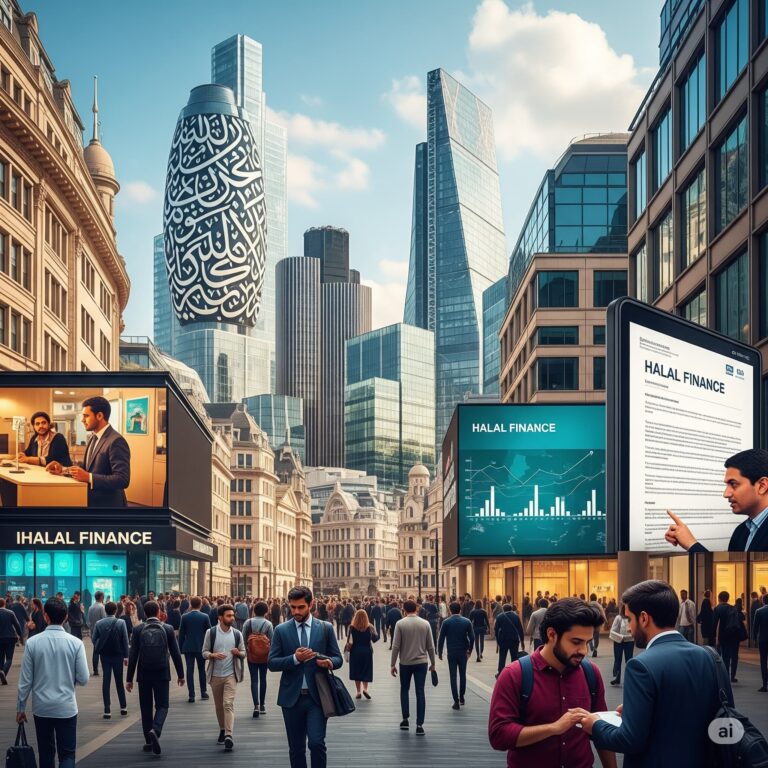Islamic banking is one of the most rapidly growing segments of the global financial industry, expected to reach over USD 4.94 trillion by 2025, according to the Islamic Financial Services Board. Yet, despite sharing common Shariah principles, Islamic banking practices differ significantly from one country to another. These differences are shaped by various factors such as local jurisprudence interpretations, regulatory environments, cultural contexts, and economic needs.
This diversity raises a fascinating question: Are Islamic banking practices the same everywhere? Spoiler alert—no, they’re not. In this article, we’ll explore how Islamic banking operates across different countries, why these differences exist, and what they mean for consumers, businesses, and regulators.
What Is Islamic Banking? A Quick Refresher
Before analyzing regional differences, let’s start with a basic understanding of what Islamic banking actually is. At its core, Islamic banking follows the principles of Shariah (Islamic law), which prohibits:
- Riba (interest): Charging or paying interest is strictly forbidden.
- Gharar (excessive uncertainty): Contracts must be clear and not based on speculation.
- Haram investments: Islamic banks avoid investments in industries such as alcohol, gambling, and pork.
Instead of interest, Islamic banks use profit-sharing (like Mudarabah) or cost-plus sales (Murabaha), lease agreements (Ijara), and joint ventures (Musharakah).
Why Differences in Islamic Banking Exist Across Countries
Imagine Islamic banking as a dish made with the same ingredients (Shariah principles) but prepared differently depending on the country. Several factors contribute to this variety:
- Local Interpretations of Shariah Law
- In Malaysia, Islamic banking is governed by a centralized Shariah board.
- In contrast, Gulf countries like Saudi Arabia allow each bank to have its own Shariah board.
- Regulatory Frameworks
- Some countries, like Pakistan and Iran, aim for full-fledged Islamic banking systems.
- Others, like the UK or South Africa, offer Islamic banking alongside conventional banking.
- Market Demand and Culture
- High demand in Muslim-majority countries drives more innovation and competition.
- In Western nations, Islamic banking often caters to niche markets.
- Political and Economic Environment
- Governments may either encourage or be indifferent to Islamic banking.
- Stability and transparency of financial systems also impact practices.
In Malaysia: The Global Trendsetter
Malaysia is often hailed as a leader in Islamic finance. The country has a dual banking system—Islamic and conventional—and is home to:
- The Islamic Financial Services Act (IFSA), which governs Shariah compliance.
- The International Shariah Research Academy (ISRA) for developing jurisprudence.
What makes Malaysia unique?
- Centralized Shariah governance: The Shariah Advisory Council at Bank Negara Malaysia ensures uniformity.
- Innovation: Products like Islamic REITs and Sukuk (Islamic bonds) were pioneered here.
Malaysia’s model is often cited as a benchmark by other countries.
In Gulf: Tradition Meets Modernity
In contrast, countries in the Gulf Cooperation Council (GCC)—including Saudi Arabia, UAE, and Bahrain—take a more decentralized approach.
- Each bank has its own Shariah board, leading to varied interpretations and product offerings.
- Heavy reliance on Murabaha due to its ease of use and alignment with traditional jurisprudence.
- Sukuk issuance is robust, particularly in Bahrain and the UAE.
Although rich in tradition, the GCC’s Islamic banking sector is also embracing digitization and fintech partnerships.
In UK: Bridging East and West
The UK was the first non-Muslim country to issue a sovereign Sukuk and has become a Western hub for Islamic finance.
- Home to institutions like Al Rayan Bank and Bank of London and the Middle East (BLME).
- Regulatory bodies like the Financial Conduct Authority (FCA) ensure compliance with both UK and Shariah laws.
Challenges:
- Smaller customer base.
- Limited product diversity compared to Muslim-majority countries.
Still, the UK offers a unique blend of Western regulatory standards and Islamic finance ethics.
In Pakistan: A Nation in Transition
Pakistan aims to completely transition to an Islamic banking system, as directed by its Federal Shariat Court in 2030.
Current landscape:
- Approximately 20% of total banking assets are Islamic.
- Key players include Meezan Bank, Al Baraka Bank Pakistan Ltd., Dubai Islamic Bank Pakistan, and Bank Islami.
Pakistan faces challenges in:
- Regulatory harmonization.
- Product development.
- Training qualified Islamic finance professionals.
Still, the country shows immense potential for growth.
Key Differences Across Countries
| Country | Shariah Governance | Regulatory Support | Innovation Level | Market Penetration |
| Malaysia | Centralized | Strong | High | High |
| Saudi Arabia | Decentralized | Moderate | Medium | High |
| UK | Decentralized | Strong | Moderate | Low to Medium |
| Pakistan | Centralized | Evolving | Moderate | Growing |
Why These Differences Matter
- For Consumers:
- Product availability and compliance may vary widely.
- Consumers need to do their homework before choosing a bank.
- For Investors:
- Differences in regulatory and legal frameworks can impact risk levels.
- For Policymakers:
- Calls for standardization are increasing.
- Harmonization could improve cross-border Islamic banking.
Is Standardization the Future of Islamic Banking?
Organizations like:
- AAOIFI (Accounting and Auditing Organization for Islamic Financial Institutions)
- IFSB (Islamic Financial Services Board)
…are pushing for greater standardization in Shariah compliance and financial reporting. However, balancing global harmonization with local needs remains tricky.
The Role of Technology and AI in Unifying Practices
Artificial Intelligence (AI), blockchain, and fintech are beginning to play a role in bridging gaps:
- Smart contracts can automate compliance checks.
- RegTech tools help banks meet multiple regulatory standards.
- AI-driven analytics offer deeper consumer insights.
These technologies could reduce interpretation gaps and improve transparency.
Conclusion: One Faith, Many Practices
Islamic banking is bound by shared faith-based principles, yet it reflects the diversity of the Muslim world—and beyond. While Malaysia and the Gulf states represent two dominant models, emerging markets like Pakistan and hybrid systems in the UK showcase the adaptability of Islamic banking.
As global demand grows, so does the need for better alignment and innovation. Perhaps the future lies in creating a common platform that respects both unity and diversity.
What do you think? Should Islamic banking strive for global standardization or continue to adapt to local contexts?
Sources:
- Islamic Financial Services Board (IFSB): https://www.ifsb.org
- AAOIFI: https://aaoifi.com
- World Bank: https://www.worldbank.org
- McKinsey & Company: https://www.mckinsey.com
- Reuters: https://www.reuters.com
- Islamic Development Bank: https://www.isdb.org




